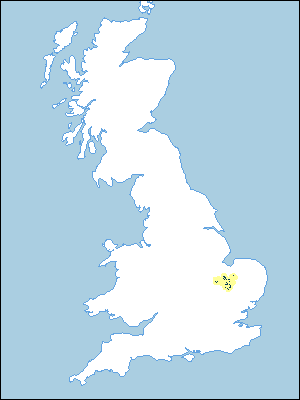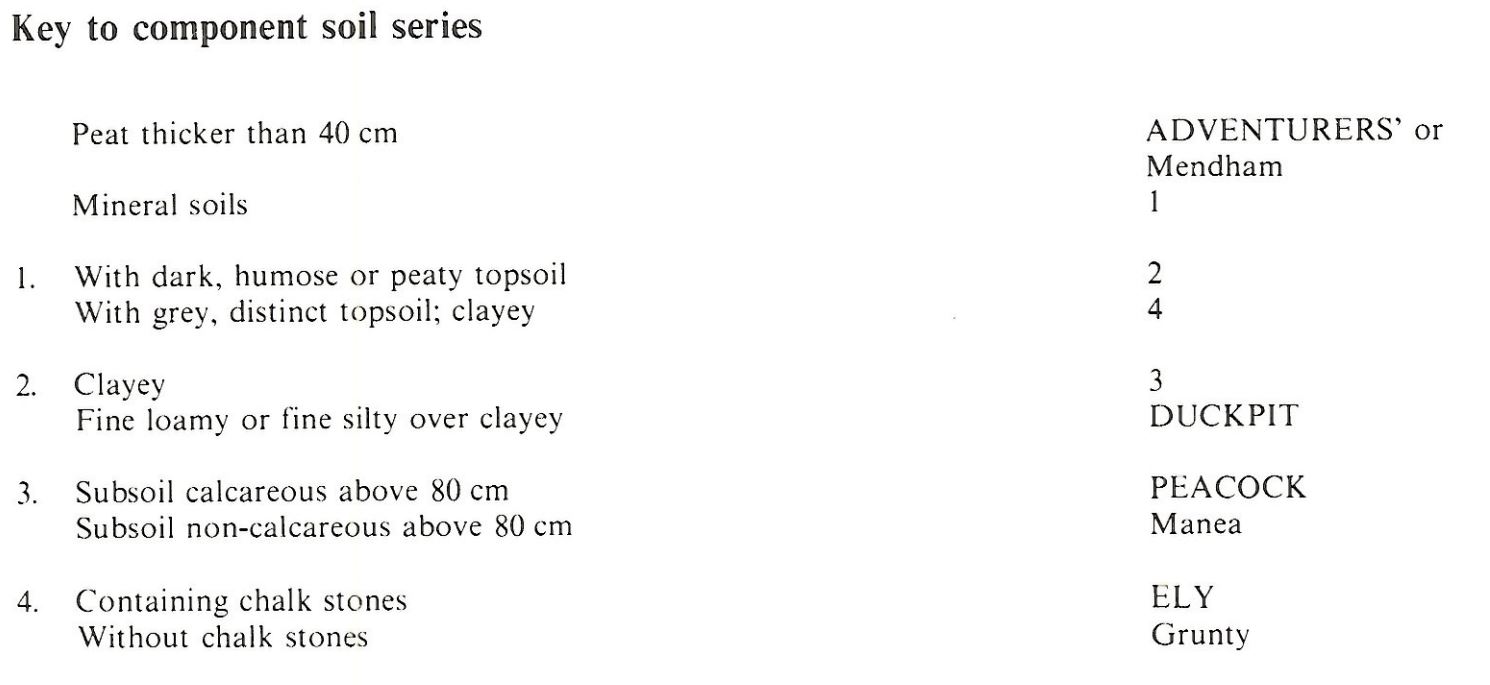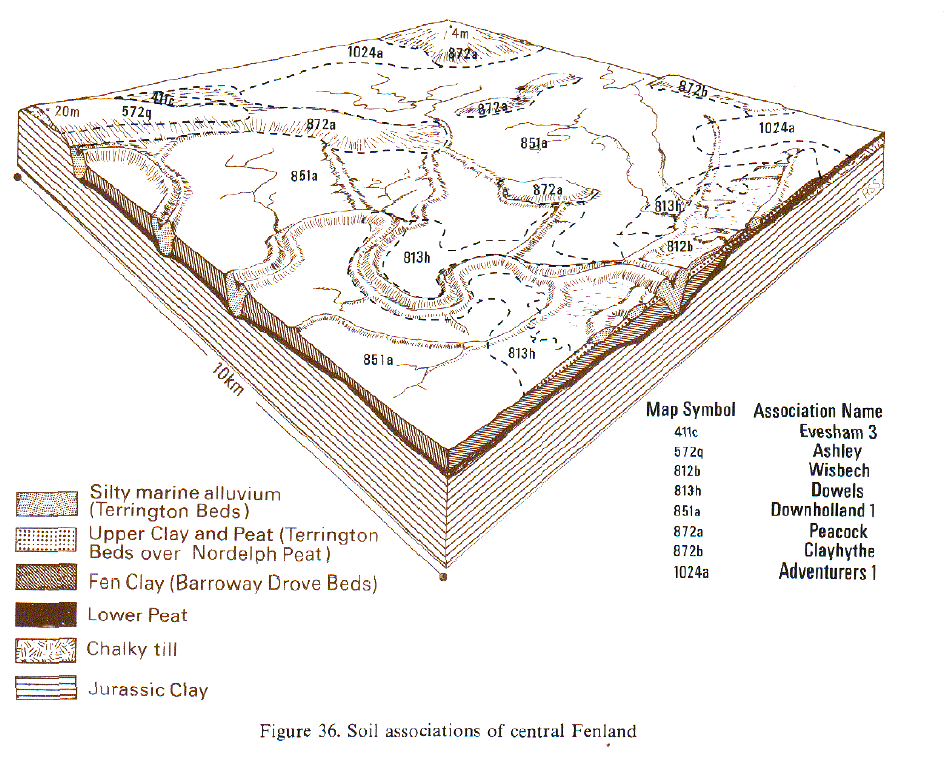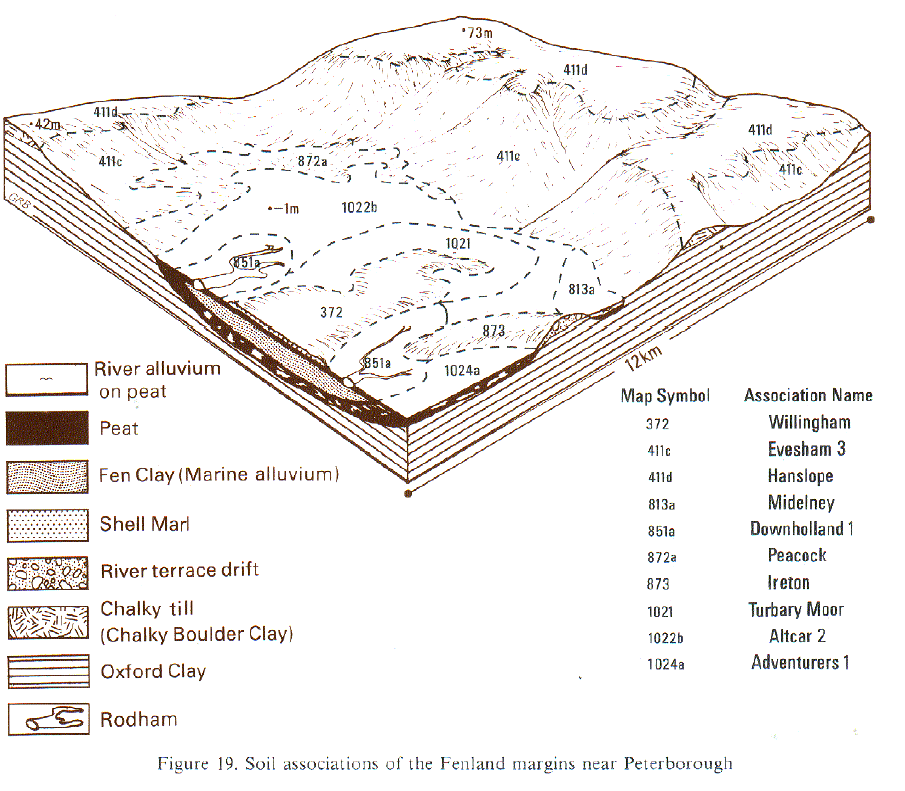
Soil Associations
0872a PEACOCK
Soil and site characteristics
Deep humose calcareous clayey and non-calcareous fine loamy over clayey soils. Some peat soils. Groundwater controlled by ditches and pumps.
Geology
Jurassic and Cretaceous clays till and associated superficial drift
Cropping and Land Use
Cereals and beans; some grassland.
Component soil series
| Subgroup | Series name | Percentage | WRB 2006 link |
|---|---|---|---|
| 8.72 | PEACOCK | 26% | Calcaric Mollic Gleysols |
| 8.71 | DUCKPIT | 15% | Calcaric Mollic Gleysols |
| 10.24 | ADVENTURERS' | 10% | Drainic Rheic Sapric Histosols |
| 8.33 | ELY | 9% | Calcaric Endogleyic Stagnosols |
Covers 161 km2 in England and Wales
Soilscapes Classification
| 23 |
Loamy and sandy soils with naturally high groundwater and a peaty surface |
0872a PEACOCK
Detailed Description
This association covers 151 km² in the Fens, the greater part in Cambridgeshire, rising from sea level to about 4 m O.D. Because of drainage and cultivation the original peat cover has largely wasted leaving clay soils with dark coloured humose or peaty topsoils. The association occurs in irregular strips around the fen margins between Peterborough, Cambridge and Soham. It occurs too in Grunty Fen, and fringes the Isle of Ely and the fen islands on which Chatteris, March, Southery and Hilgay are sited. There are small parcels in Mildenhall, Burnt and Methwold Fens. The soils are formed in till, Jurassic and Cretaceous clays, which are often covered by thin loamy or silty surface drift. The main soils belong to the Peacock series, calcareous humic gley soils, which has humose topsoils overlying mottled calcareous grey clay. Associated with it is the similar Grunty series, which is found where oxidation of the organic matter has proceeded so far that the topsoil is no longer humose. The Ely series, pelo-cambic gley soils, and similar soils with humose topsoils, occur on chalky till and have calcareous subsoils with chalk stones. The Duckpit series, typical humic gley soils, is formed where there is thin superficial drift. Locally the Manea series, which also belongs to the typical humic gley soils, is distinguished by its very acid clayey subsoils, caused by the oxidation of pyrites, and the pale yellow mottles of the mineral jarosite. On low ground where the peat has wasted least Adventurers' series, earthy eutro-amorphous peat soils, occurs associated with occasional patches of the strongly acid Mendham series.
Although the component soils are mostly humose and clayey, they are very varied both in their parent material and organic matter content. The highest ground which has long been efficiently drained and cultivated has least topsoil organic matter and in places, as in Grunty Fen, the non-humose Grunty series is dominant. Ely series on till is the main component between Ely, Littleport and March whilst the strongly acid Manea series tends to occur on the lowest ground between Ely, Haddenham and March as well as around Southery (Seale 1975b). Clayhythe, Gotham Moor and similar but fine loamy non-calcareous soils occur spasmodically. Much of the Duckpit series was previously mapped in the Ely area (Seale 1975b) as Bracks series.
Soil Water Regime
The arterial pumped drainage provided by the internal drainage boards is effective but Peacock, Duckpit, Ely, Manea and Grunty soils all have clayey slowly permeable subsoils. They are thus waterlogged in winter (Wetness Class III). Peacock, Ely and Manea commonly have "raseneisen" in the upper subsoil. This thin discontinuous layer of soft ochreous iron concretions occurs at the junction between two calcareous layers, the uppermost being less calcareous. It probably represents the upper limit of a winter water-table under an earlier drainage regime (Hodge and Seale 1966). Mole drains are effective in the component clayey soils, but pockets of loamy Duckpit and other soils may make such treatment impracticable. Tile drains tend to become blocked by ochre on Manea soils. The component Adventurers' and Mendham peat soils are now well drained (Wetness Class I).
Cropping and Land Use
The water retentiveness and the workability of the soils depend largely on the amount of organic matter in the topsoil and its thickness. The Peacock soils are moderately water retentive and of average workability. There is ample time to establish autumn-sown crops, especially as the soils are suited to minimum cultivation and direct drilling. Cultivations on Ely and Grunty soils, which are less organic, need more careful timing. Winter cereals with beans or oilseed rape as an occasional break are widely grown. The small included areas of water retentive, easily worked Adventurers' soils can be used intensively for a wide range of crops including sugar beet and potatoes. Acidity in Manea and Mendham soils may restrict root growth and reduce yields.
0872a PEACOCK
Distribution Map
 |
Note that the yellow shading represents a buffer to highlight the location of very small areas of the association.
Keys to component soil series
Eastern Region
 |
Typical Landscapes
Eastern Region
 |
Eastern Region
 |
All information Copyright, Cranfield University © 2025
Citation: To use information from this web resource in your work, please cite this as follows:
Cranfield University 2025. The Soils Guide. Available: www.landis.org.uk. Cranfield University, UK. Last accessed 25/04/2025
